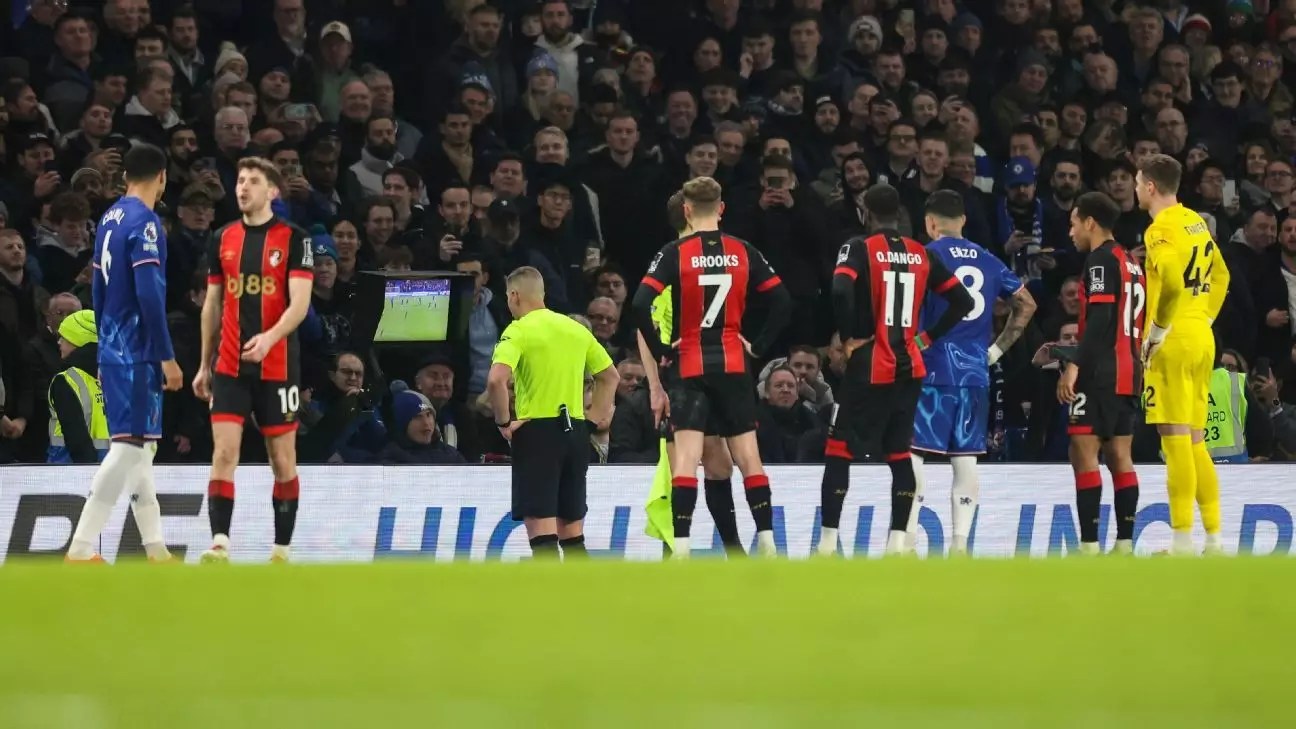The implementation of the Video Assistant Referee (VAR) system in the English Premier League has stirred considerable debate among fans, players, and managers alike. While it is designed to minimize human error in officiating, the reality often showcases a different narrative, fraught with challenges and contentious decisions that raise questions about the efficacy of the technology and the protocols in place. A recent incident involving AFC Bournemouth’s David Brooks encapsulates the ongoing struggle between technology and human judgment in football.
At its core, VAR was introduced to enhance the accuracy of crucial match decisions, such as penalties, red card offenses, and goals. The mechanics are straightforward: a team of officials, led by a Video Assistant Referee, reviews significant match incidents using video footage. However, the situation becomes complex when the threshold for intervention is not met, or when decisions made by on-field referees diverge from VAR’s suggestions. This discrepancy is exactly what transpired in the recent match between Bournemouth and Chelsea, where Brooks seemingly faced severe punishment for an alleged violent act.
In the 52nd minute of the match, with the score tied at 1-1, Brooks was involved in an off-the-ball incident with Chelsea’s Marc Cucurella. The VAR, Graham Scott, advised referee Rob Jones to review the incident for potential violent conduct. Upon review, Jones ultimately chose to issue a yellow card to Brooks, which was highly contentious given that this was the first instance in Premier League history where a VAR suggestion for a red card was overruled.
The incident was pivotal not merely for its immediate implications—Bournemouth walked away with a point—but for highlighting the effectiveness of the VAR system. The decision-making process consists of several layers: the VAR analyzes the footage and recommends an on-field review for the referee, who then has the final say upon reviewing. This has sparked discussions about the nature of player conduct, intent, and the clarity of the replays available, raising questions about how easily the officials can overlook crucial details.
Despite Scott’s history of accuracy in his VAR roles, with only one documented error in 17 appointments, the outcome of the Brooks incident showcases the inherent subjectivity that exists in officiating. The lack of clear evidence in support of violent conduct led Jones to opt for a yellow card. Herein lies a fundamental challenge with VAR: the quality of available video footage can significantly impact the decisions made. In situations where camera angles do not provide definitive evidence, referees may lean towards a cautious approach, leading to decisions that leave fans divided.
Managerial opinions on VAR interventions commonly illuminate the polarized nature of officiating decisions. Bournemouth’s manager, Andoni Iraola, publicly grappled with the VAR’s decision to recommend a review, asserting that the yellow card was warranted given the lack of violent conduct. On the other hand, Chelsea’s Enzo Maresca expressed frustration with the decision-making process, believing Brooks’ action warranted a red card. This juxtaposition of perspectives underscores a broader issue in football: the schism in interpretation that arises not just from technology, but from human judgment and the contextual understanding of player behavior.
Disputes like these demonstrate that managerial dissent arises not just from the decisions themselves, but often from the larger implications these decisions have on the game. Managers, inherently biased towards their teams, argue over the interpretations of actions and intent, further complicating the discourse surrounding VAR.
The issues surrounding VAR decisions are complex and multifaceted. While the prospect of enhanced accuracy in officiating is appealing, the implementation of the technology must account for its limitations, including the quality of video footage and the interpretation of laws. The Brooks incident serves as a case study exemplifying the need for increased clarity on protocols and greater consistency in decision-making.
Advocates for VAR must press for advancements in technology, including improved camera setups that capture all players involved in potential incidents. Additionally, ongoing education and training for referees who utilize VAR are essential in ensuring that they fully understand the implications of the technology at their disposal.
Ultimately, the integration of VAR into Premier League football reflects a broader societal shift toward valuing technology in decision-making processes. However, until the system is refined and perfected, it will remain a source of controversy in football’s beloved landscape. The call for transparency and consistency in officiating will only grow louder if such discrepancies continue to characterize the experience of fans and teams alike.


Leave a Reply